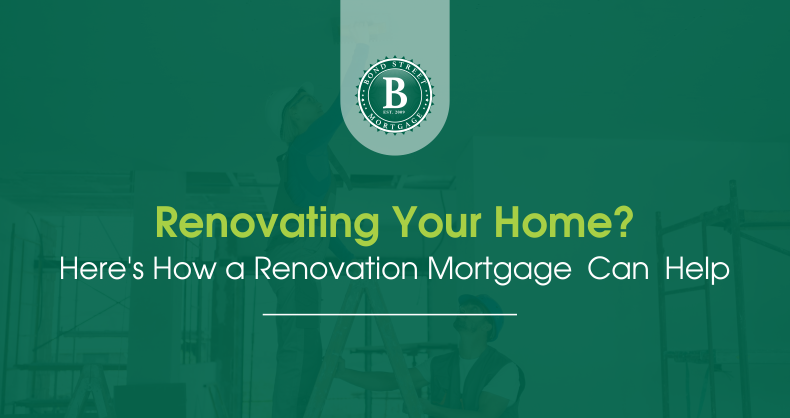
Are you thinking of renovating your home but don’t have the ready cash to meet the expenses?
Maybe you are thinking of adding more space, updating your home interior designs, or adding more security features. Undoubtedly, your home will be worth much more once the renovations are done. Whatever your reason, it is essential to consider how you will finance the renovation. One practical solution to meet your requirements is to consider taking a renovation loan.
What Is a Renovation Loan?
A renovation loan lets buyers purchase a home and renovate it with the same loan. Since there is only a single mortgage that fulfills both the needs of a home loan and renovation, a buyer can reduce the closing costs.
A renovation loan is an excellent solution for those who want to borrow money quickly. It is ideal in situations where you need to make quick repairs to create additional space for any new members who are moving in or need to conduct repairs after some natural disaster.
5 Key Benefits of Renovation Mortgages
The greatest benefit is combining the home cost and the renovation into a single low-cost mortgage. In addition, you get these benefits:
1.Add Value to Your Home
After improvements to your home, you can borrow against your property value. Hence, with a renovation mortgage, you add to your property value and build equity in your home right from the start. Moreover, those wishing to list their home for sale can gain a competitive edge by updating their home and maintaining it well through renovation. Your home will be worth more after renovation if you want to use it as collateral to get another loan.
2.Removes Hurdles to Home Ownership
People desiring home ownership often face many barriers to buying their dream homes, like finding a suitable neighborhood or the time to identify the right home. You can overcome all these issues by taking a renovation loan. In such situations, a home in the right location that only requires some improvements could be a practical choice.
3.Refinancing With a Renovation Loan
A renovation loan can be used with your existing home as an option for refinancing and renovation. It is a good option for people who want to retain their current homes but only need to make some improvements. With low-interest rates, a renovation loan is a suitable option to refinance, along with the twin benefits of adding value and building equity.
4.Better Loan Control and Flexibility
In renovation loans, you get the flexibility to tailor the borrowing and repayment to match your specific needs. Choose the loan amount based on the scope of your renovation and your present financial situation. Lenders usually offer different repayment options, letting you choose a schedule that syncs with your income stream.
5.Quicker Approval Process
Usually, home renovation loans are easy to acquire, requiring less documentation and paperwork. It is more accessible than other loan options, with an application process that is less stringent, followed by a quick approval process.
Steps to Getting a Renovation Mortgage That Best Suits Your Needs
Here are the steps to follow to get a renovation loan customized to your requirements:
1.Review Your Credit
While applying for a renovation loan, your credit score is significant as it helps in getting low-interest rates. One of the first steps can be to improve your credit score by repaying credit card bills and all other payments on time.
2.Estimate Your Project Cost
You will need to make a comprehensive budget estimating all the costs involved, whether labor overheads or the cost of supplies. Consider if you may need to rent a place to live in while your renovation is going on. This calculation will help you get an idea of which loan is best and give an estimate of your monthly payments.
3.Know Your Current Equity
If you are planning for a home renovation, it is advisable to understand how much equity you have accrued by looking at your monthly mortgage statement. If you do not have much equity currently and if, by doing a renovation, you can add value to your home, then a renovation loan can be a suitable option.
4.Compare the Rates
Look at your renovation loan’s payment terms and fees offered by different lenders. Different banks offer varied rates and costs. Do your research to ensure you get the best deal.
Comparing Different Renovation Mortgage Options
Let us now compare the two popular renovation mortgage options:
1.FHA 203(k): This government-backed commercial rehab loan funds both the purchase of a home and renovations
FHA 203(k) loans are of two types:
- Limited 203(k) loans – these are capped at $35,000
- Standard 203(k) loans – for major construction or rehabilitation
Pros of renovation mortgages:
- Down payments and income requirements are less stringent compared to other mortgage loans
- A single mortgage covers your home purchase and renovations
- The down payment is minimal, only 3.5 percent
- It may be eligible for a greater tax deduction
Cons:
- Mortgage Insurance Premium or MIP is required
- It is to be used for the primary residence only
- Involves more paperwork than other mortgage types
- Remodels are limited to FHA’s list of eligible projects
Costs and fees: Closing costs could range between 3 to 6 percent of the purchase price
Other considerations: It cannot be used for luxury renovations such as constructing a swimming pool
2.Fannie Mae HomeStyle Renovation loan: The Fannie Mae HomeStyle Renovation loan lets you buy either a place that needs repairs or an option to refinance your existing home loan and get money for improvements.
As it is a single loan with one monthly payment, you need not take a loan for the mortgage and another for repairs.
Pros of Fannie Mae HomeStyle Renovation Loan:
- You can take this loan to improve your property and boost its value
- Your down payment can be as low as 3 percent if you’re a first-time buyer and are getting a fixed-rate loan
- Repayment terms may be shorter, and interest rates may be lower than conventional improvement loans
Cons:
- Renovation costs are capped at 75% of the home’s after-repaired value. There is also a cap of 50% for manufactured homes
- You have to complete the renovations within 12 months from the date when your loan closes
- The paperwork is more, and it takes longer to come through than other conventional loans
- You cannot directly access funds
Costs and fees: It is only a single loan with one set of closing costs. The fees and closing costs could be higher than other mortgage types.
Other considerations: It is not the ideal option if you are looking to secure a quick deal
Conclusion
By renovating your house, you not only enhance your comfort of living but also increase your home’s value. By using the information provided above, find a renovation loan that best suits your needs and budget.
At Bond Street Mortgage, our experts will let you compare the different renovation loans and help select one that meets your financial capacity and unique needs. With our years of experience in dealing with mortgages, we will work with you to make your renovation loan application and approval process a pleasant experience.












